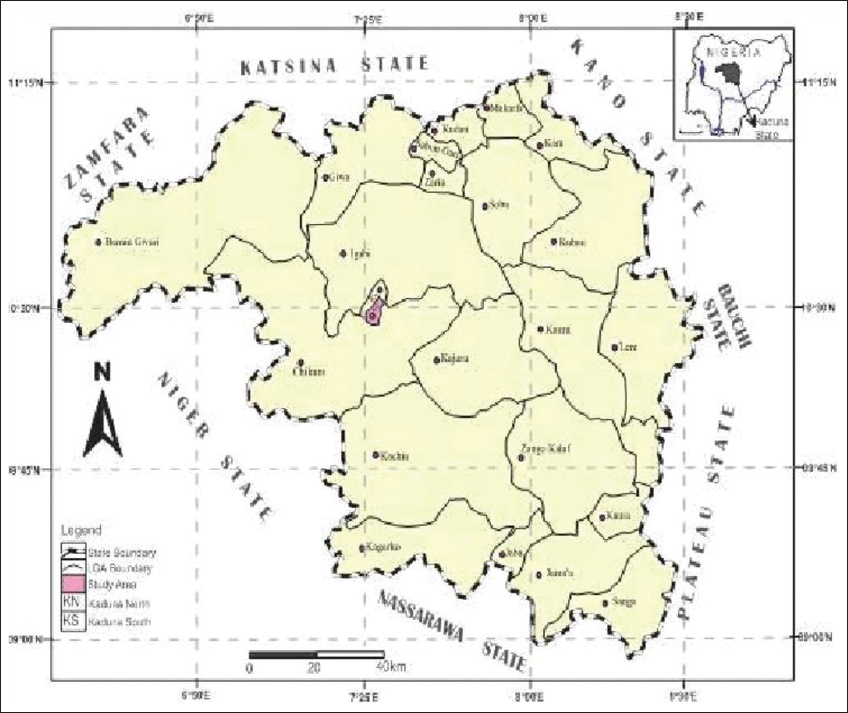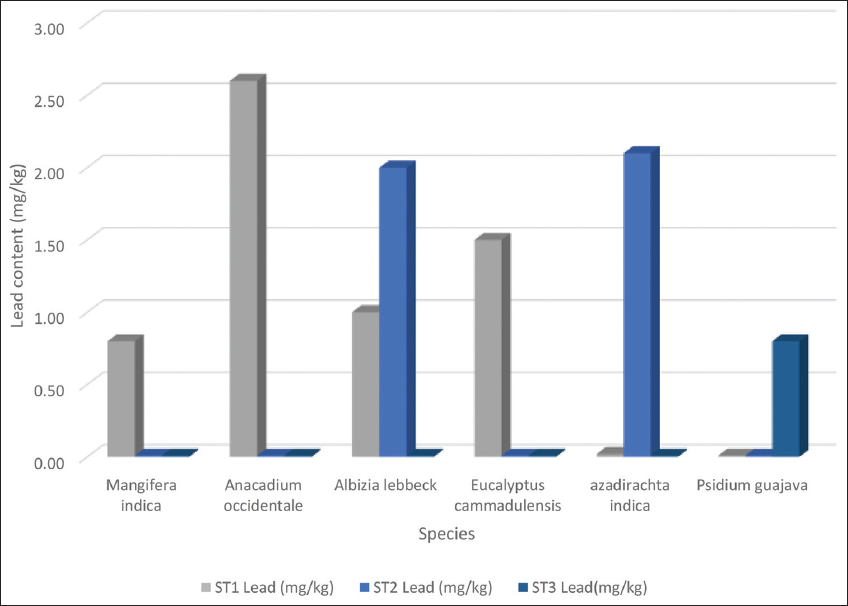1. Colombo JC, Landani P, Bilos C. Sources distribution and variability of air borne particles and hydrocarbons in La Plata area, Argentina. Environ Poll 1999;104:303-31.
2. Takada H, Onda T, Ogura N. Determination of polycyclic aromatic hydrocarbons in urban street dust and their source materials by capillary gas chromatography. Environ Sci Technol 1990;24:1179-86.
3. Bai J, Cui B, Wang Q, Gao H, Ding Q. Assessment of heavy metal contamination of roadside soils in Southwest China. Stoch Environ Res Risk Assess 2008;23:341-7.
4. De Kimple CR, Morel JF. Urban soil management:A growing concern. Soil Sci 2000;165:31-40.
5. Manta DS, Angelone M, Bellanca A, Neri R, Sprovieri M. Heavy metal in urban soils:A case study from the city of Palermo (Sicily), Italy. Sci Total Environ 2002;300:229-43.
6. Li FR, Ling F, Gao XQ. Traffic-related heavy metal accumulation in soils and plants in Northwest China. Soil Sediment Contam 2001;16:473-84.
7. Gunn, E.O. Towards a green transport policy in Nigeria. In:Adinna EN, Ekop OB, Attah VI, editors. Environmental Pollution and Management in the Tropics. Enugu, Nigeria:Snaap Press;2003.
8. Horaginamani SM, Ravichandran M. Ambient air quality in an Urban Area and its effect on plants and human beings:A case study of Tiruchirappalli, India. Khatamandu Univ J Sci Eng Technol 2010;6:13-9.
9. Adefolalu AA. Transport and rural integrated development in:Proceedings of the National Conference on:Integrated Rural Development. Women Dev 1980;1:294-9.
10. Mabogunje AL. Development Process-a Spatial Perspective. London:Hutchinson and Co Publishers Ltd.;1980. 234-44.
11. Hutchison Y, Fang J, Leonard SS, Rao KM. Cadmium inhibits the electron transfer chain and induces reactive oxy-gen species. Free Radical Biol Med 2007;36:1434-43.
12. Alloway BJ. Heavy Metals in Soils. 2nd ed. London, UK:Blackie Academic and Professional;1995. 258-72.
13. Rowchowdhury A, Gauturn AK. Alteration of human sperm and other seminal constitution after lead exposure. Ind J Physiol Allied Sci 1995;49:68.
14. Shen XM, Rosen JF, Guo D, Wu SM. Childhood lead poisoning in China. Sci Total Environ 1996;181:101.
15. Nariagu JO, Blenkson ML, Ocran K. Childhood lead poisoning/in Africa:A growing public health. Sci Total Environ 1996;181:93-100.
16. Kim R, Rotinitzky A, Sparrow D. A longitudinal study of low level lead exposure and impairment of renal function. A normative aging study. J Am Med Assoc 1996;275:1177.
17. Shannon M, Greaf JW. Lead intoxication in child with pervasive development disorders. J Toxicol Clin Toxicol 1996;34:177.
18. Rohn RD, Shelton JE, Hill JR. Soma-tomdine activity before and after chelation therapy in lead intoxication children. Arch Environ Health 1982;37:369-73.
19. Ogwuegbu MO, Muhanga W. Investigation of lead concentration in the body of people in the copper belt in Zambia. J Environ 2005;1:66-75.
20. Duruibe JO, Ogwuegbu MO, Egwurugwu JN. Heavy metal pollution and human biotoxic effect. Int J Phys Sci 2007;2:112-8.
21. Don-Sheng G, Peart MR. Heavy metal concentration in plants and soil at roadside locations and parks of urban Guangzhou. J Environ Sci 2006;18:495-502.
22. Sodimu AI, Yilwa VM, Onwumere GB. The impact of gas flaring from Kaduna refining and petrochemical company (KRPC) on plant diversity in Kaduna Northern Guinea Savanna eco-region of Nigeria. Int J World Sci News 2017;69:168-78.
23. Aribike, D. S. Environmental impacts of industrialization in Nigeria. In:A Treatise Paper Presented at the Conference of Nigeria Society of Chemical Engineer Held at Obafemi Awolowo University, Ile-Ife, Osun State, Nigeria;1996. 14-6.
24. Onianwa PC, Adoghe JO. Heavy metal contact of roadside dust gutter sediment in Ibadan, Nigeria. Environ Int 1997;23:873-7.
25. Moller A, Muller HW, Abdullah A. Urban soil pollution in Damascus, Syria:Concentration and patterns of heavy metals in the soils of the Damascus Ghouta. Geoderma 2005;124:63-71.
26. Sun J, Yu R, Hu G, Su G, Zhang Y. Catena tracing of heavy metal sources and mobility in a soil depth profile via isotopic variation of Pb and Sr. Catena 2018;171:440-9.
27. Zaborska A. Anthropogenic lead concentrations and sources in Baltic Sea sediments based on lead isotopic composition. Mar Pollut Bull 2014;85:99-113.
28. Yao Z, Wu B, Shen X, Cao X, Jiang X, Ye Y, et al. Road emission characteristic of VOC from rural vehicles and their zone formation potential in Beijing, China. Atmosp Environ 2015;105:91-6.
29. Li FR, Ling F, Gao XQ. Traffic-related heavy metal accumulation in soils and plants in Northwest China. Soil Sediment Contam 2007;16:473-84.
30. Rejini MB, Janardhanan K. Effect of heavy metals on seed germination and pearly seedling growth of groundnut, sunflower and ginger. Geosios 1989;16:164-70.
31. Jarup L. Hazards of heavy metal contamination. Braz Med Bull 2003;68:425-6.
32. Michalke B. Element specification definitions, analytical methodology and some examples. Ecotoxicol Environ Saf 2003;56:122-39.
33. Silva AL, Barrocas PR, Jacobs SC, Mreira JC. Dietary intake and health effect of selected toxic element. Braz J Plants Physiol 2005;17:79-93.
34. NPC. Nigerian Population Commission Bulletin. China:NPC;2006. 25.
35. Sodimu AI. Soil Heavy Metal Content from Some Human Activities and the Effect on Biodiversity in Kaduna Northern Guinea Savanna of Nigeria. Unpublished Ph. D Thesis Submitted to Department of Biological Sciences. Nigeria:Nigerian Defence Academy, Kaduna;2016. 305.
36. Witting R. General Aspects of Biomonitoring Heavy Metals by Plants, Plants as Biomonitors/Indicator for Heavy Metals in the Terrestrial Environment. Weinheim:Market B, VCH Publisher;1993. 3-28.
37. Market B. Plant and Biomonitors/Indicators for Heavy Metals in Terrestrial Environment. Weinnheim:VCH Press;1993. 15.
38. Kabata-Pendias A, Pendias H. Trace Elements in the Soil and Plants. 1st ed. Boca Raton, Florida:CRC Press;2000.
39. AOAC. Official Method of Analysis. Association of Official Analytical Chemist. 11th ed. Washington, DC:AOAC;2005.
40. Atayese MO, Eigbadon AI, Oluwa KA, Adesokan JK. Heavy metal contamination of amarantus grown along major highways in Lagos, Nigeria. Afr Crop Sci J 2009;16:225-35.
41. Bako SP, Ezealor AU, Yahuza T. Heavy metal deposition in soils and plant impacted by anthropogenic modification of two sites in Sudan Savanna of North Western Nigeria. India:INTECH;2014. 697-721.
42. Magaji Y, Ajibade GA, Yilwa VM, Appah J, Haroun AA, Alhaji I, et al. Concentration of heavy metals in the soil and translocation with phytoremediation potential by plant species in military shooting range. Int J World Sci News 2019;92:260-71.
43. Sodimu AI, Olorukooba MM, Lapkat GL, Osunsina O, Awobona TA, Likita MS. Assessment of selected leaves of roadside tree as bio-indicator of traffic related lead pollution in Kaduna city, Nigeria. J Sustain Environ Manage 2020;12:130-8.
44. Aksoy A, Ozturk M. Phoenix dactylifera L as a bio-indicator of heavy metal pollution in Turkey. J Trace Microprob Tech 1996;14:605.
45. Al-Shayeb SM, Al-Rakhi MA, Seaward MR. The date palm (Phoenix dactylifera. L) as a bio-indicator of lead and other elements in arid environment. Sci Total Environ 1995;168:1-10.
46. Niijar RS, Jain SS, Parida M. Development of transport related air pollutant modelling for an Urban Area. J India Road Congress 2002;63:487.
47. Grace N. Assessment of Heavy Mental Contamination of Food Crop and Vegetation from Motor Vehicle Emission in Kampala City, Uganda. Kampala:Department Botany Makercie University;2004. 12.
48. Zaidi MI, Asrar A, Farooqi MA. The heavy metal concentration along roadsides trees of Quetta and its effects on public health. J Appl Sci 2005;5:708-7.
49. Lin ZF, Li SS, Sun GC. Mineral elements of plants leaves in Southern sub tropical areas of dinghushan. Acta Ecol Sin 1988;9:320-4.
50. Cape JN, Unsworth MH. Deposition, uptake and residence of pollutant. In:Schutte-Hostede S, Darrall WM, Bank LW, Wellbur AR, editors. Air Pollution and Metabolism. London:Elsevier Applied Science;1988. 1-8.
51. Enete IC, Ogbonna CE, Officha MC. Using trees as an Urban heat island reduction tool in Enugu city, Nigeria based on their air pollution tolerance index. Ethiop J Environ Stud Manage 2012;5:1.



